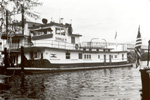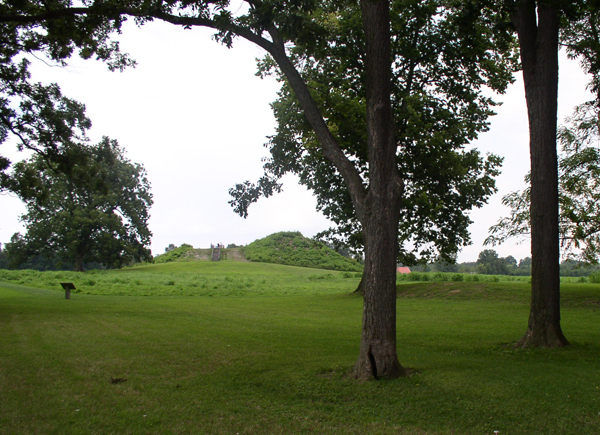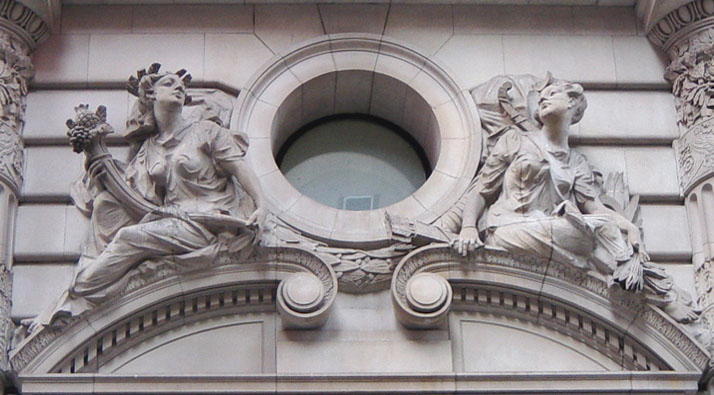|
National Historic Landmarks In Indiana
National Historic Landmarks in Indiana represent Indiana's history from the Native American era to its early European settlers and motor racing. There are 44 National Historic Landmarks (NHLs) in the state, which are located in 23 of its 92 counties. They illustrate the state's industrial and architectural heritage, as well as battles, circuses, education, and several other topics. One of the NHLs in the state has military significance, fourteen are significant examples of different architectural styles, nine are associated with significant historical figures, and one is an archaeological site. Two NHL properties, both ships that were formerly located in Indiana, were later moved to another state. The National Historic Landmark Program is administered by the National Park Service, a branch of the Department of the Interior. The National Park Service determines which properties meet NHL criteria and makes nomination recommendations after an owner notification process. The Secreta ... [...More Info...] [...Related Items...] OR: [Wikipedia] [Google] [Baidu] |
History Of Indiana
The history of human activity in Indiana, a U.S. state in the Midwestern United States, Midwest, stems back to the migratory tribes of Native Americans in the United States, Native Americans who inhabited Indiana as early as 8000 BC. Tribes succeeded one another in dominance for several thousand years and reached their peak of development during the period of the Mississippian culture. The region entered recorded history in the 1670s, when the first European ethnic groups, Europeans came to Indiana and claimed the territory for the Early Modern France, Kingdom of France. After France ruled for a century (with little settlement in this area), it was defeated by the Kingdom of Great Britain in the French and Indian War (Seven Years' War) and ceded its territory east of the Mississippi River. Britain held the land for more than twenty years, until after its defeat in the American Revolutionary War. Britain then ceded the entire Trans-Appalachia, trans-Allegheny region, including what ... [...More Info...] [...Related Items...] OR: [Wikipedia] [Google] [Baidu] |
Francis Costigan
Francis Costigan (March 4, 1810 – April 18, 1865) was an Indiana architect known primarily for his work in Madison, Indiana and Indianapolis. He worked primarily in the Greek Revival style. Life and work Born in 1810 in Washington, D.C., Costigan worked as a carpenter in Baltimore, before settling in Madison, Indiana in 1837. Two of his important Madison commissions are the Lanier Mansion and the Charles Shrewsbury House, both National Historic Landmarks. His own home in Madison is listed on the National Register of Historic Places, and is available for tours througHistoric Madison, Inc He left Madison for Indianapolis in 1851 where he designed residences and public buildings. Notable works included the Institute for the Education of the Blind, the Bates House (1852-3), the Odd Fellows Building (1853), the Gatling Gun Club, the Wallace Residence and the Groves Residence. In 1858, he designed, built and then operated a hotel called the Oriental on the site of what is now the ... [...More Info...] [...Related Items...] OR: [Wikipedia] [Google] [Baidu] |
Evansville, Indiana
Evansville is a city in Vanderburgh County, Indiana, United States, and its county seat. With a population of 118,414 at the 2020 United States census, 2020 census, it is Indiana's List of cities in Indiana, third-most populous city after Indianapolis and Fort Wayne, Indiana, Fort Wayne, the most populous city in Southern Indiana, and the List of United States cities by population, 249th-most populous city in the United States. It is the central city of the Evansville metropolitan area, a hub of commercial, medical, and cultural activity of southwestern Indiana and the Illinois–Indiana–Kentucky tri-state area, which is home to over 911,000 people. The 38th parallel north crosses the north side of the city and is marked on Interstate 69 in Indiana, Interstate 69 immediately north of its junction with Indiana State Road 62, Indiana 62 within the city's east side. Situated on an Meander, oxbow in the Ohio River, the city is often referred to as the "Crescent Valley" or "River ... [...More Info...] [...Related Items...] OR: [Wikipedia] [Google] [Baidu] |
Building
A building or edifice is an enclosed Structure#Load-bearing, structure with a roof, walls and window, windows, usually standing permanently in one place, such as a house or factory. Buildings come in a variety of sizes, shapes, and functions, and have been adapted throughout history for numerous factors, from building materials available, to weather conditions, land prices, ground conditions, specific uses, monument, prestige, and aesthetic reasons. To better understand the concept, see ''Nonbuilding structure'' for contrast. Buildings serve several societal needs – occupancy, primarily as shelter from weather, security, living space, privacy, to store belongings, and to comfortably live and work. A building as a shelter represents a physical separation of the :Human habitats, human habitat (a place of comfort and safety) from the ''outside'' (a place that may be harsh and harmful at times). buildings have been objects or canvasses of much architecture, artistic expression. ... [...More Info...] [...Related Items...] OR: [Wikipedia] [Google] [Baidu] |
Beaux-Arts Architecture
Beaux-Arts architecture ( , ) was the academic architectural style taught at the in Paris, particularly from the 1830s to the end of the 19th century. It drew upon the principles of French neoclassicism, but also incorporated Renaissance and Baroque elements, and used modern materials, such as iron and glass, and later, steel. It was an important style and enormous influence in Europe and the Americas through the end of the 19th century, and into the 20th, particularly for institutional and public buildings. History The Beaux-Arts style evolved from the French classicism of the Style Louis XIV, and then French neoclassicism beginning with Style Louis XV and Style Louis XVI. French architectural styles before the French Revolution were governed by Académie royale d'architecture (1671–1793), then, following the French Revolution, by the Architecture section of the . The academy held the competition for the Grand Prix de Rome in architecture, which offered prize winn ... [...More Info...] [...Related Items...] OR: [Wikipedia] [Google] [Baidu] |
Jean Baptiste Richardville
Jean Baptiste de Richardville ( 1761 – 13 August 1841), also known as or in the Miami-Illinois language (meaning 'Wildcat' or 'Lynx') or John Richardville in English, was the last 'civil chief' of the Miami people. He began his career in the 1790s as a fur trader who controlled an important portage connecting the Maumee River to the Little River (the present-day Little Wabash River) in what became the present-day state of Indiana. Richardville emerged a principal chief in 1816 and remained a leader of the Miamis until his death in 1841. He was a signatory to the Treaty of Greenville (1795), as well as several later treaties between the U.S. government and the Miami people, most notably the Treaty of Fort Wayne (1803), the Treaty of Fort Wayne (1809), the Treaty of Saint Mary's (1818), the Treaty of Mississinewas (1826), the treaty signed at the Forks of the Wabash (1838), and the Treaty of the Wabash (1840). Richardville and other Miami leaders were criticized for perso ... [...More Info...] [...Related Items...] OR: [Wikipedia] [Google] [Baidu] |
Miami Tribe
The Miami ( Miami–Illinois: ''Myaamiaki'') are a Native American nation originally speaking the Miami–Illinois language, one of the Algonquian languages. Among the peoples known as the Great Lakes tribes, they occupied territory that is now identified as north-central Indiana, southwest Michigan, and western Ohio. The Miami were historically made up of several prominent subgroups, including the Piankeshaw, Wea, Pepikokia, Kilatika, Mengakonkia, and Atchakangouen. In modern times, Miami is used more specifically to refer to the Atchakangouen. By 1846, most of the Miami had been forcefully displaced to Indian Territory (initially to what is now Kansas, and later to what is now part of Oklahoma). The Miami Tribe of Oklahoma are the federally recognized tribe of Miami Indians in the United States. The Miami Nation of Indiana, a nonprofit organization of self-identified descendants of Miamis who were exempted from removal, have unsuccessfully sought separate recognition. Na ... [...More Info...] [...Related Items...] OR: [Wikipedia] [Google] [Baidu] |
Treaty Of Mississinewas
The Treaty of Mississinewas or the Treaty of Mississinewa also called Treaty of the Wabash is an 1826 treaty between the United States and the Miami and Potawatomi Tribes regarding purchase of Indian lands in Indiana and Michigan. The signing was held at the mouth of the Mississinewa River on the Wabash, hence the name. Terms After negotiations with the Potawatomi to build the Michigan Road through Indiana by James B. Ray and Lewis Cass on behalf of President John Quincy Adams, Cass negotiated a pair of treaties to purchase lands in Indiana and Michigan, collectively called the Treaty of Mississinewa. By the treaty, the Miami leadership agreed to cede to the United States the bulk of Miami reservation lands held in Indiana by previous treaties. In compensation, the families of Chief Richardville and certain other Miami notables were given estates in Indiana, with houses like the Richardville House and livestock furnished at government expense. The federal government agreed to ... [...More Info...] [...Related Items...] OR: [Wikipedia] [Google] [Baidu] |
Allen County, Indiana
Allen County is a county in the U.S. state of Indiana. As of the 2020 Census, the population was 385,410, making it the List of counties in Indiana, third-most populous county in Indiana. The county seat and largest city is Fort Wayne, Indiana, Fort Wayne, the second largest city in Indiana. Allen County is included in the Fort Wayne Metropolitan Statistical Area and the Fort Wayne, Indiana, Fort Wayne–Huntington, Indiana, Huntington–Auburn, Indiana, Auburn Combined Statistical Area. Allen County is the cultural and economic center of Northern Indiana, northeastern Indiana. The county is within a radius of major population centers, including Chicago, Cincinnati, Cleveland, Columbus, Ohio, Columbus, Detroit, Indianapolis, Louisville, Kentucky, Louisville, Milwaukee, and within a one-day drive of one-third of the U.S. population and one-fifth of Canadians. Occupied for thousands of years by cultures of indigenous peoples, Allen County was organized by European Americans on D ... [...More Info...] [...Related Items...] OR: [Wikipedia] [Google] [Baidu] |
Fort Wayne, Indiana
Fort Wayne is a city in Allen County, Indiana, United States, and its county seat. Located in northeastern Indiana, the city is west of the Ohio border and south of the Michigan border. The city's population was 263,886 at the 2020 census, making it the second-most populous city in Indiana after Indianapolis, and the 83rd-most populous city in the U.S. The Fort Wayne metropolitan area, consisting of Allen and Whitley counties, has an estimated population of 463,000. Fort Wayne is the cultural and economic center of northeastern Indiana. Fort Wayne was built in 1794 by the United States Army under the direction of American Revolutionary War general Anthony Wayne, the last in a series of forts built near the Miami village of Kekionga. Named in Wayne's honor, the European-American settlement developed at the confluence of the St. Joseph, St. Marys, and Maumee rivers, known originally as Fort Miami, a trading post constructed by Jean Baptiste Bissot, Sieur de Vin ... [...More Info...] [...Related Items...] OR: [Wikipedia] [Google] [Baidu] |
Madison Historic District (Madison, Indiana)
The Madison Historic District is a historic district located in Madison, Indiana. In 2006, it was named a National Historic Landmark due to its unique Midwestern beauty and architecture scheme. Among the prominent buildings in the district are the Lanier Mansion, one of two buildings separately considered a National Historic Landmark in the district, and the Schofield House, the birthplace of the Grand Lodge of Indiana. In total, it comprises 133 blocks of Madison, Indiana, overlooking the Ohio River in Jefferson County, Indiana. Madison's most prominent days were before 1860. It was a major transportation hub, taking river commerce and shipping it to the inland of Indiana. Once transportation routes changed, Madison faltered until the tourism industry saved it more than a century later. Many of the prominent buildings in the district were built by Madison-native-architect Francis Costigan, who favored the Greek Revival style. and Two of these are National Historic La ... [...More Info...] [...Related Items...] OR: [Wikipedia] [Google] [Baidu] |
Charles L
Charles is a masculine given name predominantly found in English language, English and French language, French speaking countries. It is from the French form ''Charles'' of the Proto-Germanic, Proto-Germanic name (in runic alphabet) or ''*karilaz'' (in Latin alphabet), whose meaning was "free man". The Old English descendant of this word was ''Churl, Ċearl'' or ''Ċeorl'', as the name of King Cearl of Mercia, that disappeared after the Norman conquest of England. The name was notably borne by Charlemagne (Charles the Great), and was at the time Latinisation of names, Latinized as ''Karolus'' (as in ''Vita Karoli Magni''), later also as ''Carolus (other), Carolus''. Etymology The name's etymology is a Common Germanic noun ''*karilaz'' meaning "free man", which survives in English as wikt:churl, churl (< Old English ''ċeorl''), which developed its deprecating sense in the Middle English period. Some Germanic languages, for example Dutch language, Dutch and German ... [...More Info...] [...Related Items...] OR: [Wikipedia] [Google] [Baidu] |






